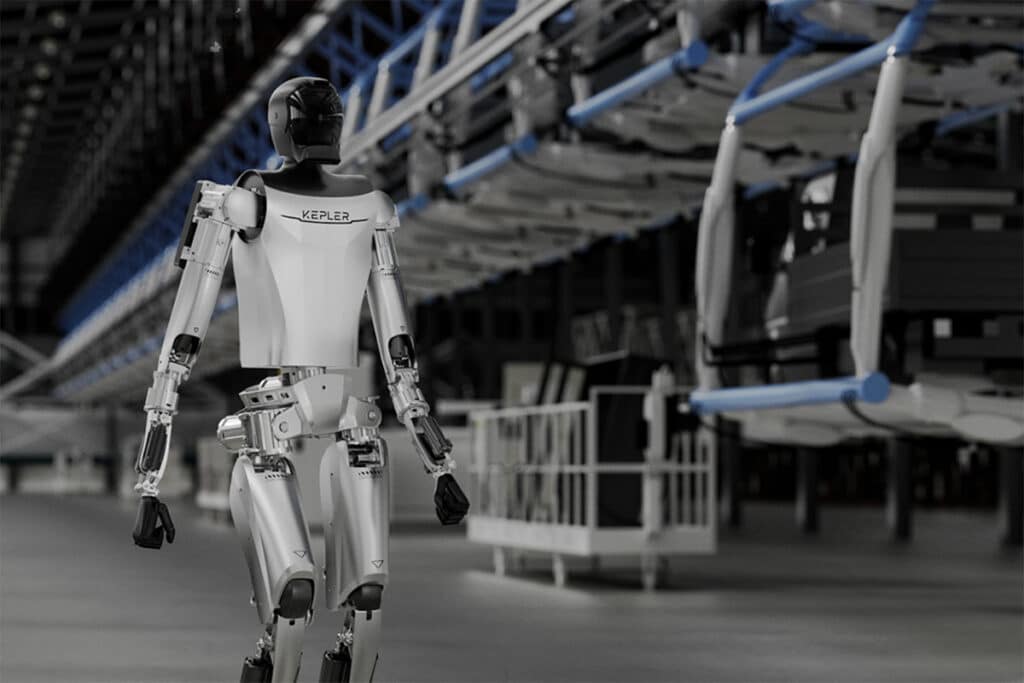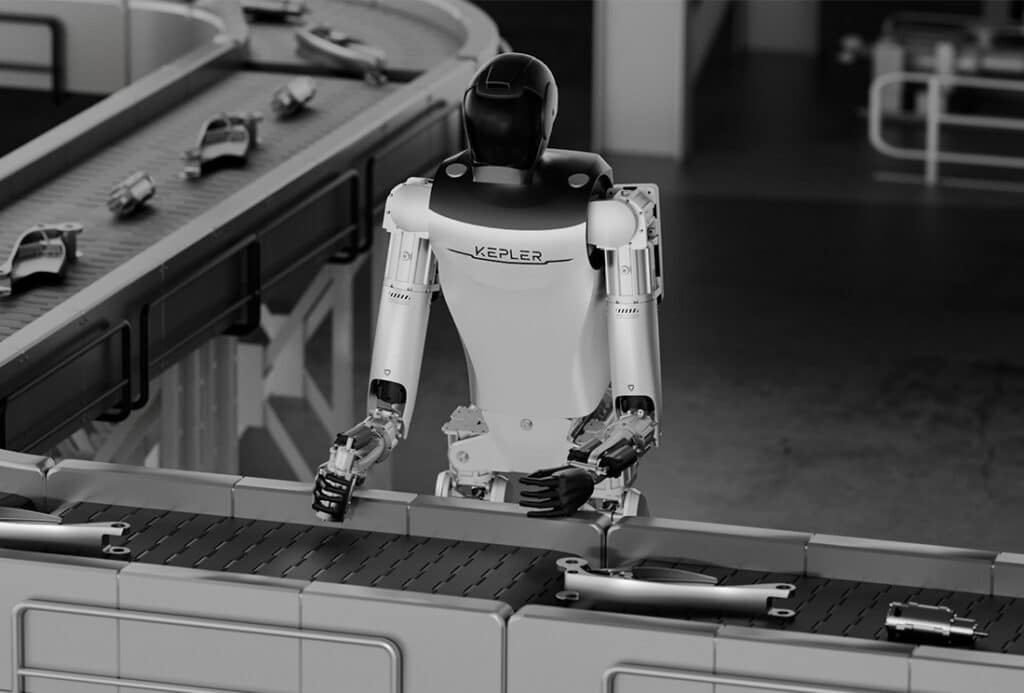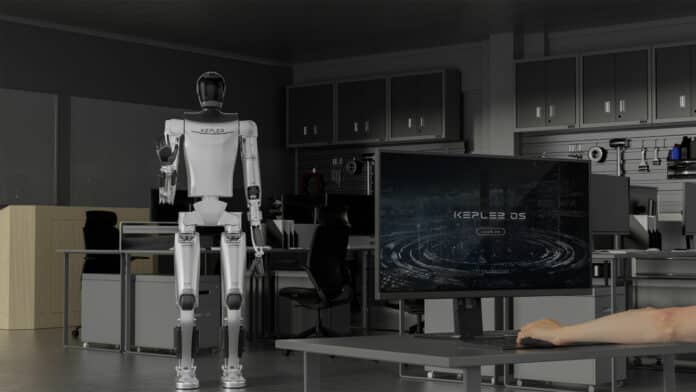China’s Kepler Exploration Robot Company is ready to unveil its latest breakthrough in robotics at the upcoming Consumer Electronics Show (CES) in Las Vegas.
The Kepler series of humanoid robots is a remarkable achievement in artificial intelligence (AI) and embodied intelligence for robotics. These robots can interact with humans and the environment in natural and intuitive ways, demonstrating the cutting-edge capabilities of Kepler Exploration Robot Co.
The new Kepler Forerunner series humanoid robots are truly impressive. Their advanced engineering allows them to navigate difficult terrain, detect and avoid obstacles, and manipulate objects with remarkable dexterity. This humanoid stands at a height of 178cm (5’10”), weighs 85kg (187 lbs.), and boasts an intelligent and dexterous hand with 12 degrees of freedom. The entire body has up to 40 degrees of freedom, making it comparable to Tesla’s Optimus in terms of capabilities.

The humanoid robot is powered by a system similar to Tesla’s Optimus, which uses advanced technology such as a planetary roller screw actuator and rotary actuator to enable the robot to exhibit sophisticated body movements, flexible hand control, and advanced visual perception.
The planetary roller screw actuator utilized in the robot’s limbs is very powerful, delivering an impressive thrust of 8,000N. It’s designed to provide precise control, efficient power, and quick responsiveness, making it ideal for handling complex tasks. The rotary actuator used in the waist and joints is just as impressive, with a peak torque of 200N.m and repeat positioning accuracy of 0.01 degrees. This provides robust support for the torso’s movement, ensuring efficient and stable functionality of the robot.

In addition, the Forerunner robot has an impressive set of sensors located in its head, including a binocular camera, four microphones, an accelerometer, and an attitude and heading reference system. It also has a synthetic voice module and stereophonic speakers for communication.
The Kepler Humanoid Robot has the potential to revolutionize a range of industries, including intelligent manufacturing, logistics, education, research, smart inspection, high-risk tasks, and outdoor work. Its technological advancements showcased in its global debut video have sparked much discussion across the world of robotics.
“The Kepler Humanoid Robot is dedicated to revolutionizing productivity with cutting-edge technology, hastening the arrival of a ‘three-day work week.’ The shift will enable humans to dedicate more time to meaningful endeavors like space exploration. Our goal is for the Kepler robot to be the trailblazer in landing on the exoplanet Kepler, paving the way for a second home for humanity,” Kepler Exploration Robot co-founder Debo Hu said.
The production and shipping of this robot is expected to begin in the third quarter of this year. Priced at approximately US$30,000 for international customers, the robot is set to hit the market, offering a competitive and accessible option in the humanoid robot sector.
